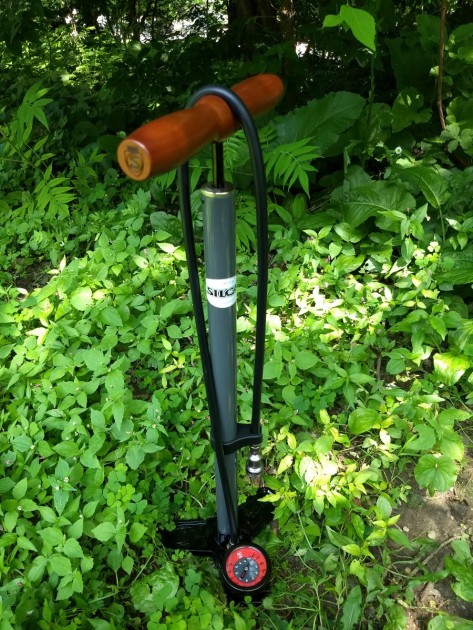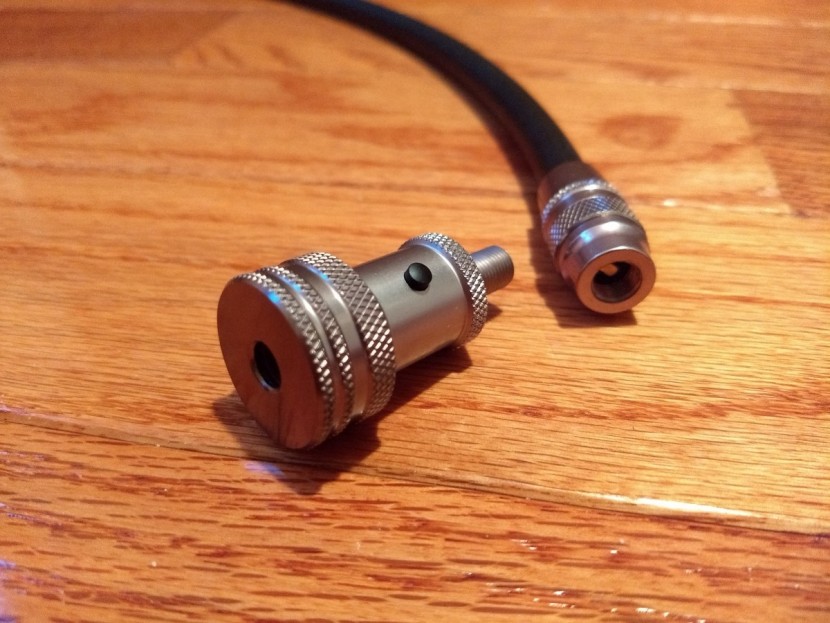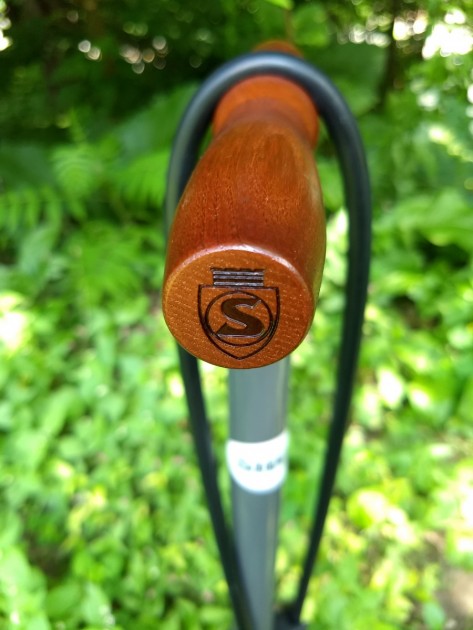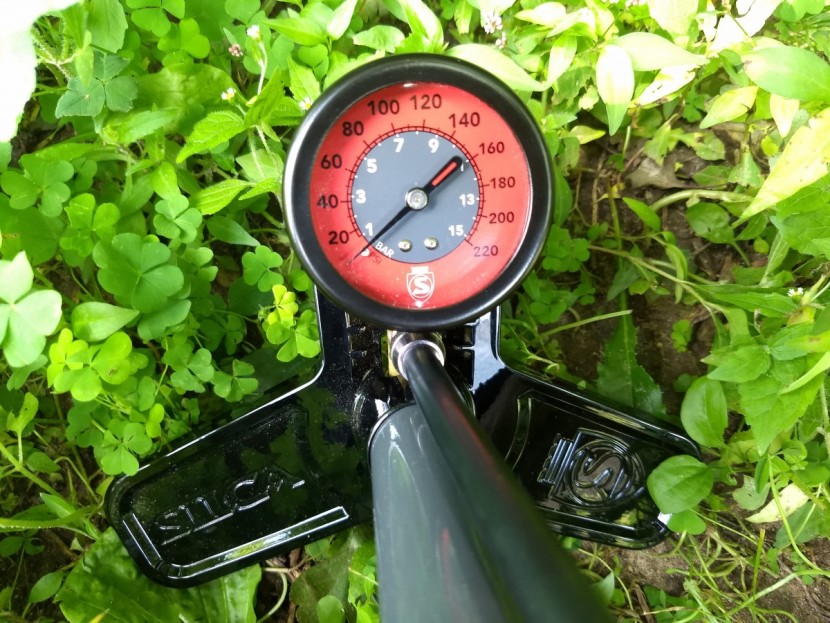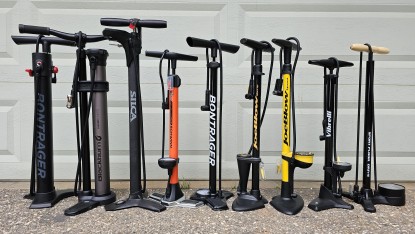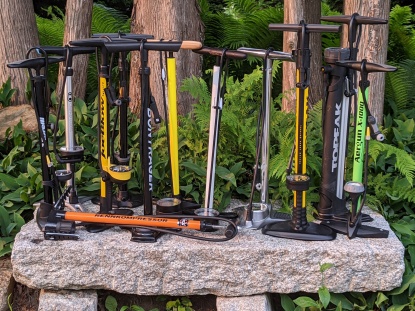Silca Pista Plus Review
Our Verdict
Our Analysis and Test Results
Silca bike pumps, the classic track pumps built in Italy for nearly 100 years, are now manufactured in Indianapolis since they were bought by an American company in 2014, and we were excited to try out one of these new models. The Silca Pista Plus has a classic, sleek look to it with a steel base and barrel, wooden handle, and minimalistic design.
Ease of Attachment/Detachment
The Pista pump head accepts Schrader in its pure form and twists down to attach to Schrader valves, which is a natural enough process. It then has a screw-in chuck for Presta valves. When using Presta, one only has to push the head down hard onto an open valve and start pumping away. There is no additional locking mechanism to engage; it just goes on and works. It does take a pretty hard push to get it on, and a hard yank to remove it, which feels concerning. Another concern here is that the Presta chuck fully detaches from the head, with nowhere to put it while you're pumping Schrader. For anyone who switches between valve types with any frequency, it would be all too easy to misplace or leave behind the Presta chuck and find oneself S.O.L.
Stability
The base of the Pista Plus is a steel tripod, and each leg is 2" wide, but only 3.5" long, which helps it maintain one of the narrowest profiles of any pump we've tried. Despite the narrow base, we found this pump to be quite stable. Steel tripod bases tend to be quite successful in this area, and this one has the added benefit of the gauge living right on the front leg of the base. This isn't always an ideal design for reading the actual gauge, especially when it's rather small (more on that below), but it does help the pump stay upright.
The wide legs give a nice surface to stand on while pumping, and the pumping motion is very smooth. It feels like a high-quality pumping experience, with not much wobbling when the pump is in motion.
Inflation
A track pump focuses more on reaching high pressures than getting there quickly, but we found the inflation speed to still be perfectly passable with the Pista Plus. It took about 24 pumps of the handle to get from 20 to 80psi, which is just a few pump strokes more than the fastest pumps. It's not breaking any speed records, but that isn't its job. It does have the advantages of a comfortable wooden handle and a smooth pumping motion to help those pump strokes really fly by.
Accuracy
In addition to imperfections with the gauge itself that we've covered above, this pump also suffers from some significant accuracy problems. We actually found this to be more apparent at higher pressures, which should be a specialty for the Pista — we noticed differences as high as 7psi from our independent gauge. This isn't necessarily a catastrophic difference for casual riders, but this is a pricey pump presumably aimed at higher level road racers, and 7psi can make an important difference for folks trying to get every last bit of speed out of their ride.
Gauge
The Pista Plus gauge maintains a classic look, but it might do well to consider an update. The gauge is a mere 2.5" wide, with smallish black PSI numbers on a red background (the bar measurements are white on gray). The needle is also black and is mostly hovering above a dark gray surface, which doesn't help it to stand out much. The printed face of the gauge is set deep beneath the top surface, and the thick black edges of the gauge case tend to cast a strong shadow across the PSI readings. The gauge is also set into the front of the base, all the way down on the ground, far away from the eyeballs of the pumper.
The numbers themselves are clear enough, and the gauge is well-built with a solid metal case around it. The gauge on this pump also screws off for replacement purposes, which could be a nice feature, but we don't recommend trying this unless you're committed to going all the way: we unscrewed and removed the gauge, then could never get it to sit straight again. Screwing the gauge down tight after removing it leaves it turned about 70 degrees counterclockwise from its original position. This certainly smells like user error, but on the other hand, if a part is very easy to remove, it should be reasonably easy to reattach.
Value
As one of the most expensive pumps we've reviewed, the Pista Plus would need to rank very highly in our test results to be considered a good value, and unfortunately, our testers didn't find that to be the case. While it's far from a terrible pump, it does have a rather poor gauge with some accuracy issues, and its strengths are shared by plenty of thriftier units.
Conclusion
The Silca Pista Plus floor pump is a great looking pump with a classic design, made mostly of steel with a gorgeous wooden handle. The base is strong and stable, and it can reach very high pressures — there are definitely perks! Its test results were not impressive in general though, especially related to the gauge's design and accuracy. For the high price, it's difficult to recommend this model.



